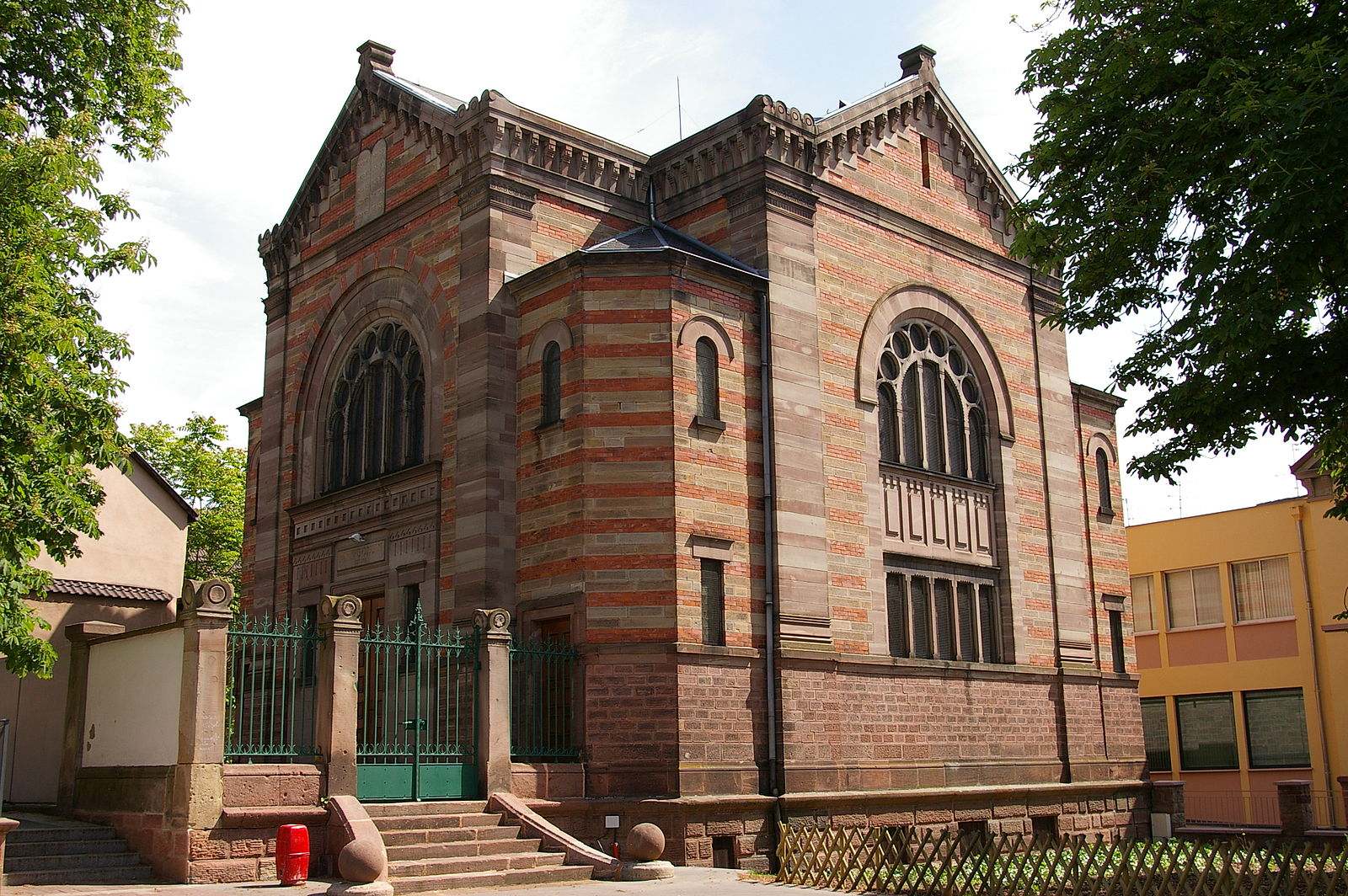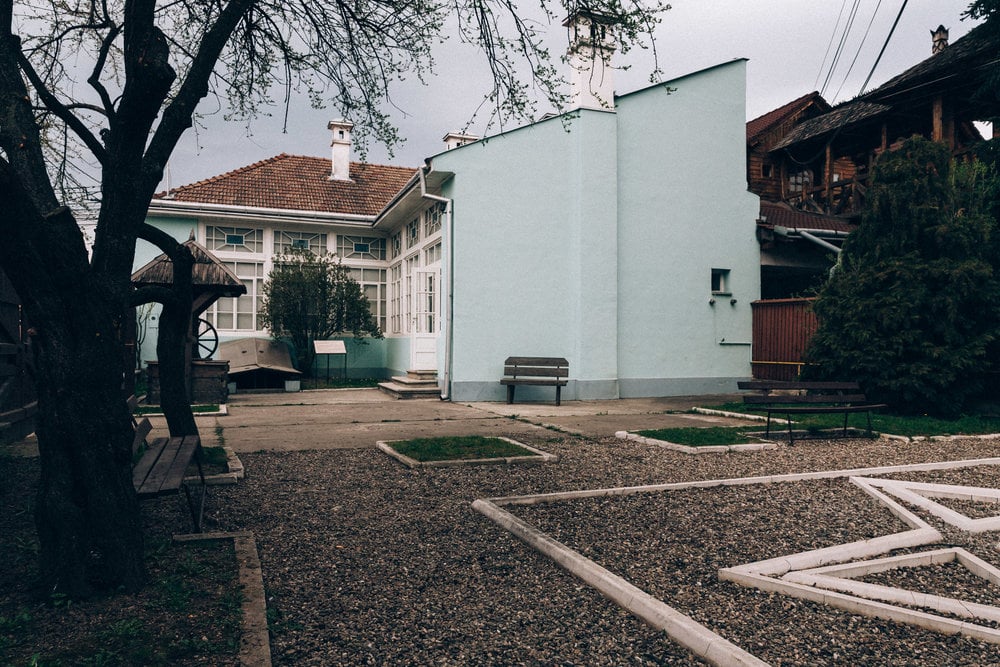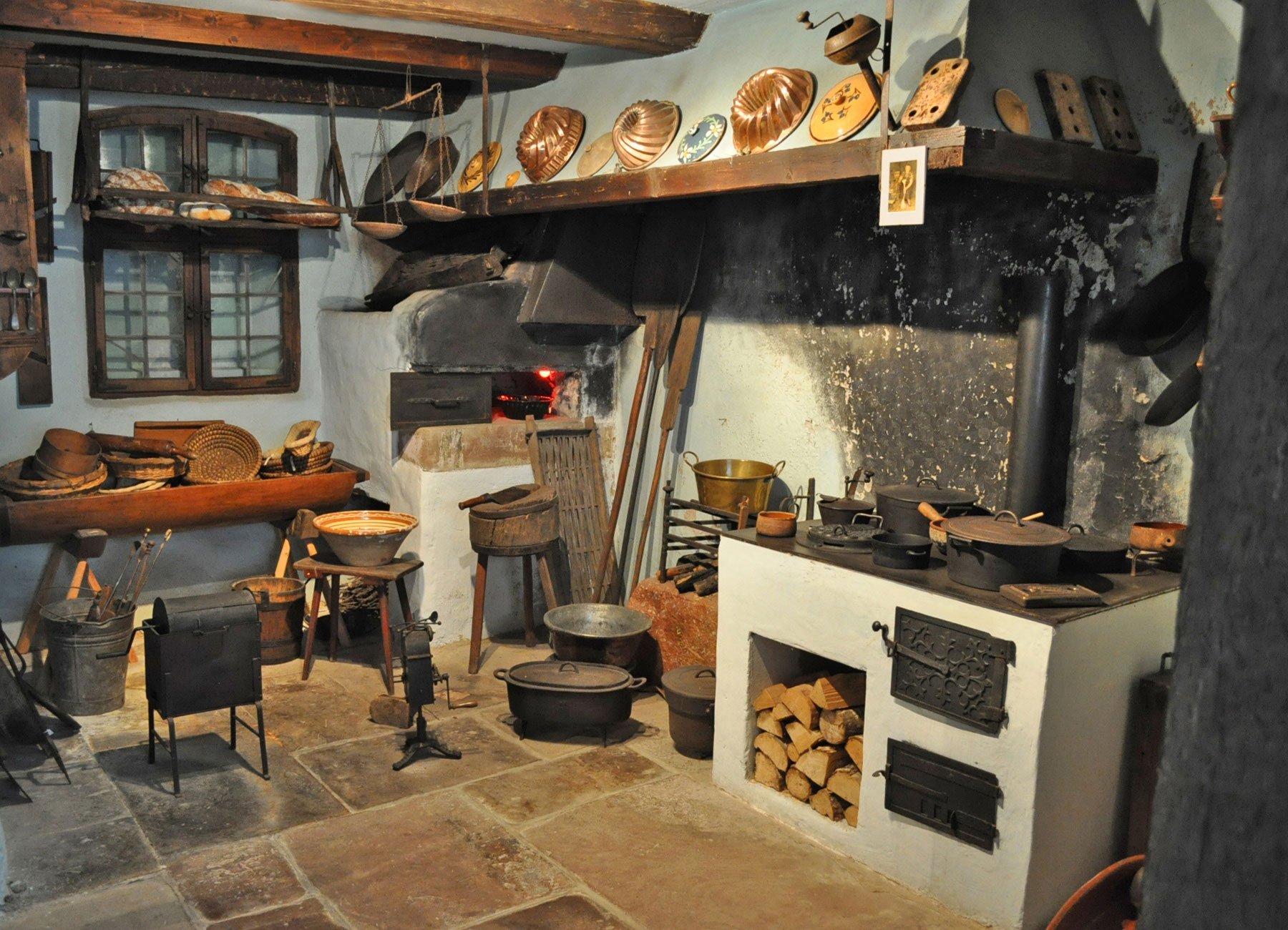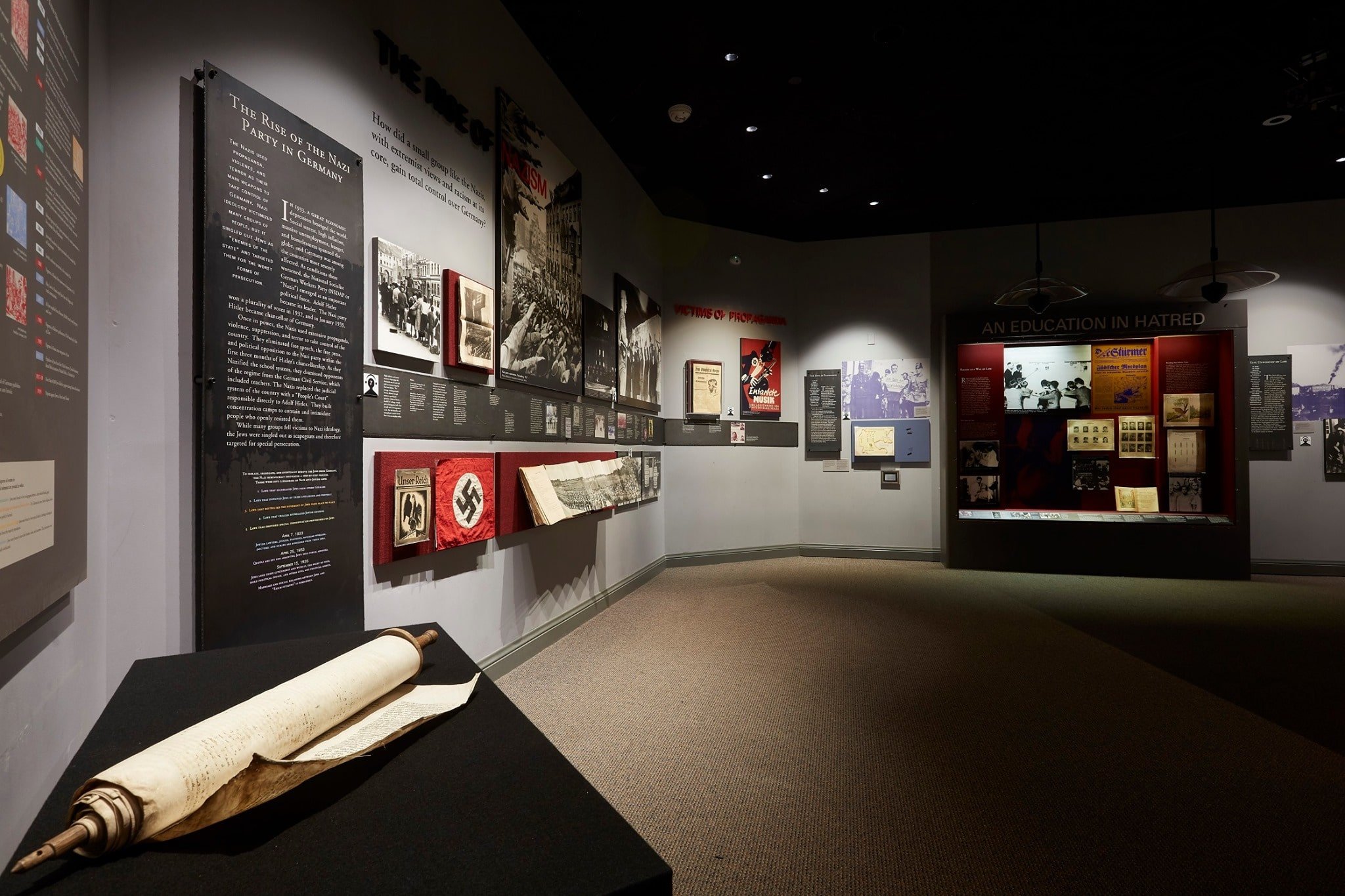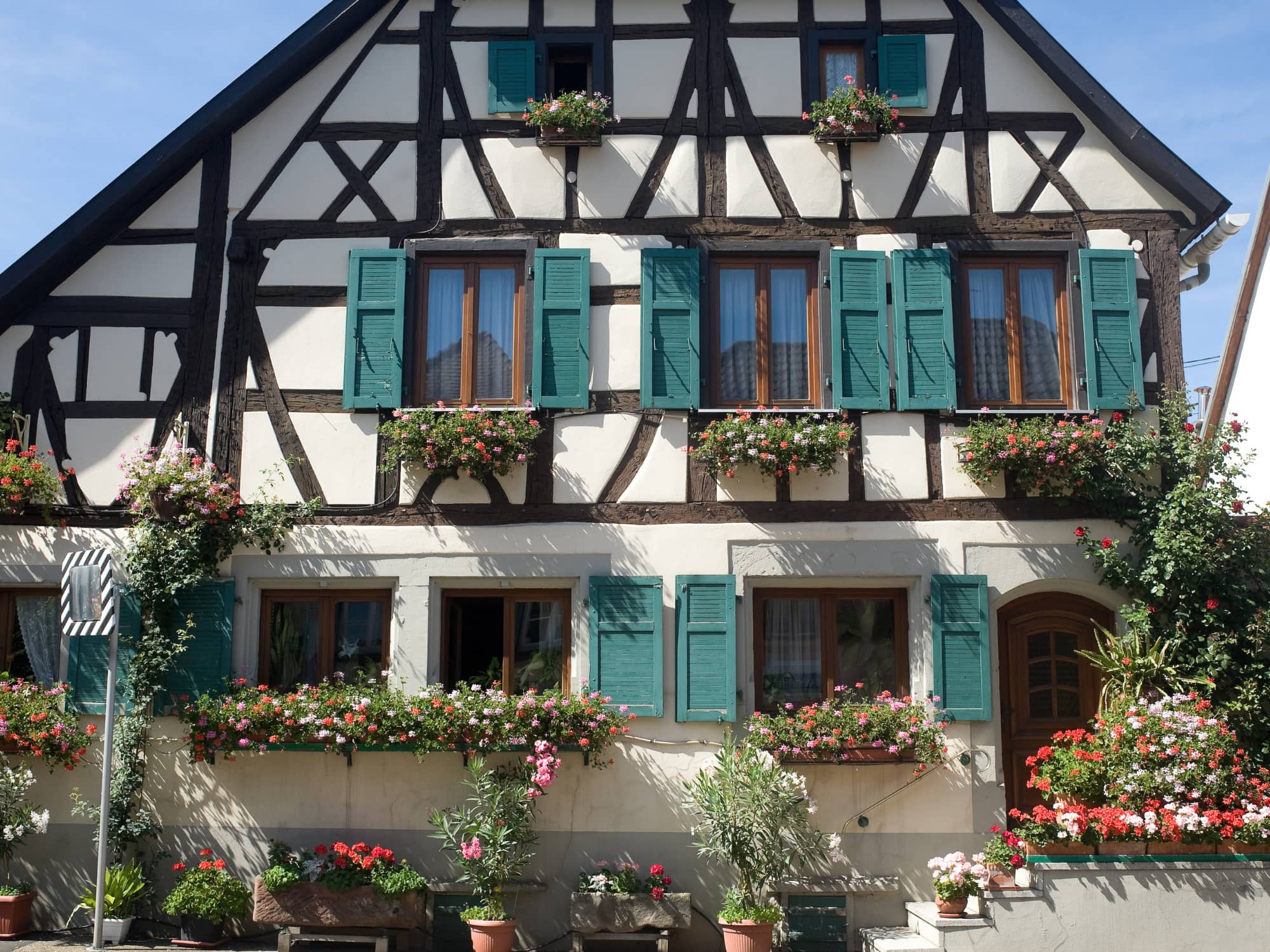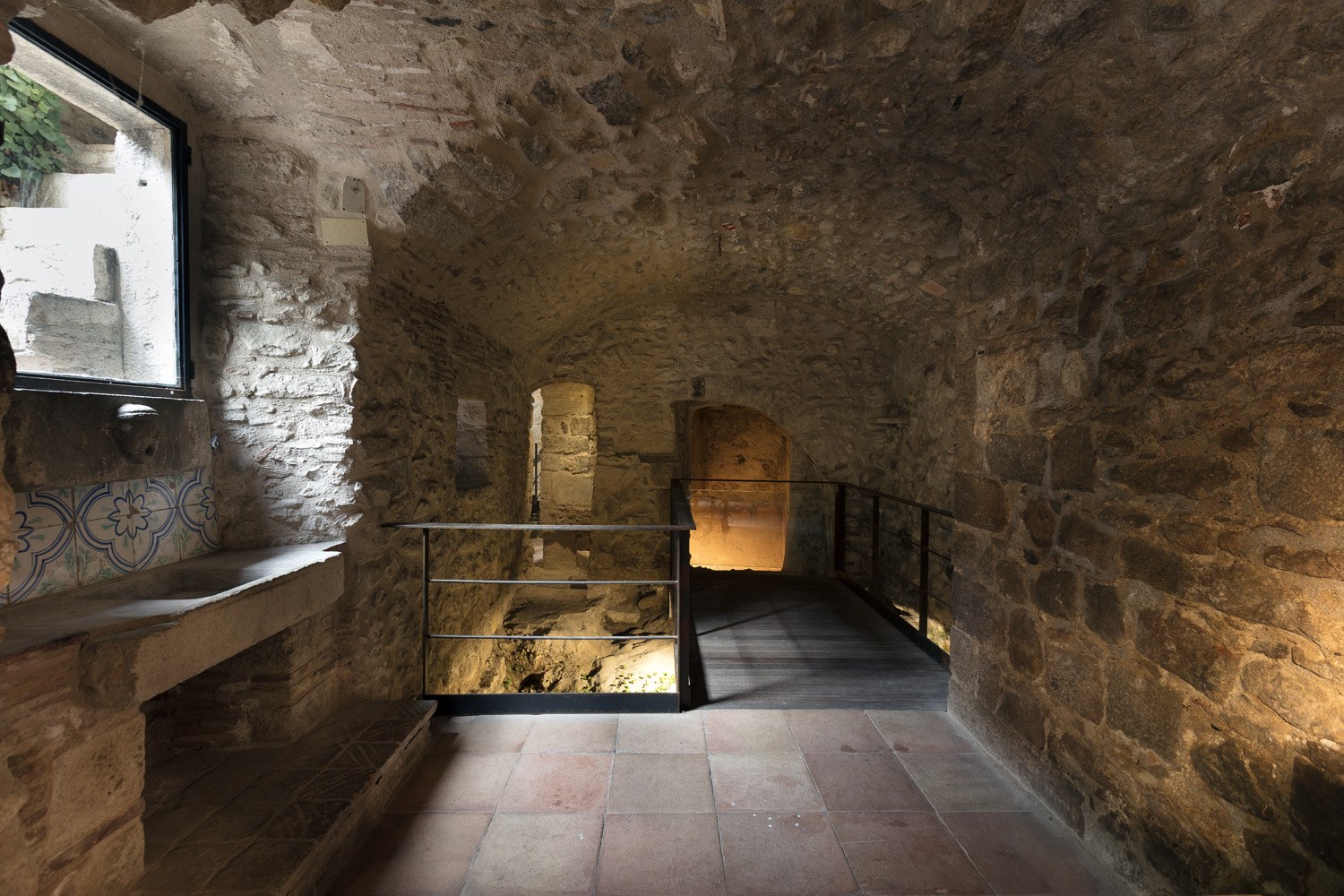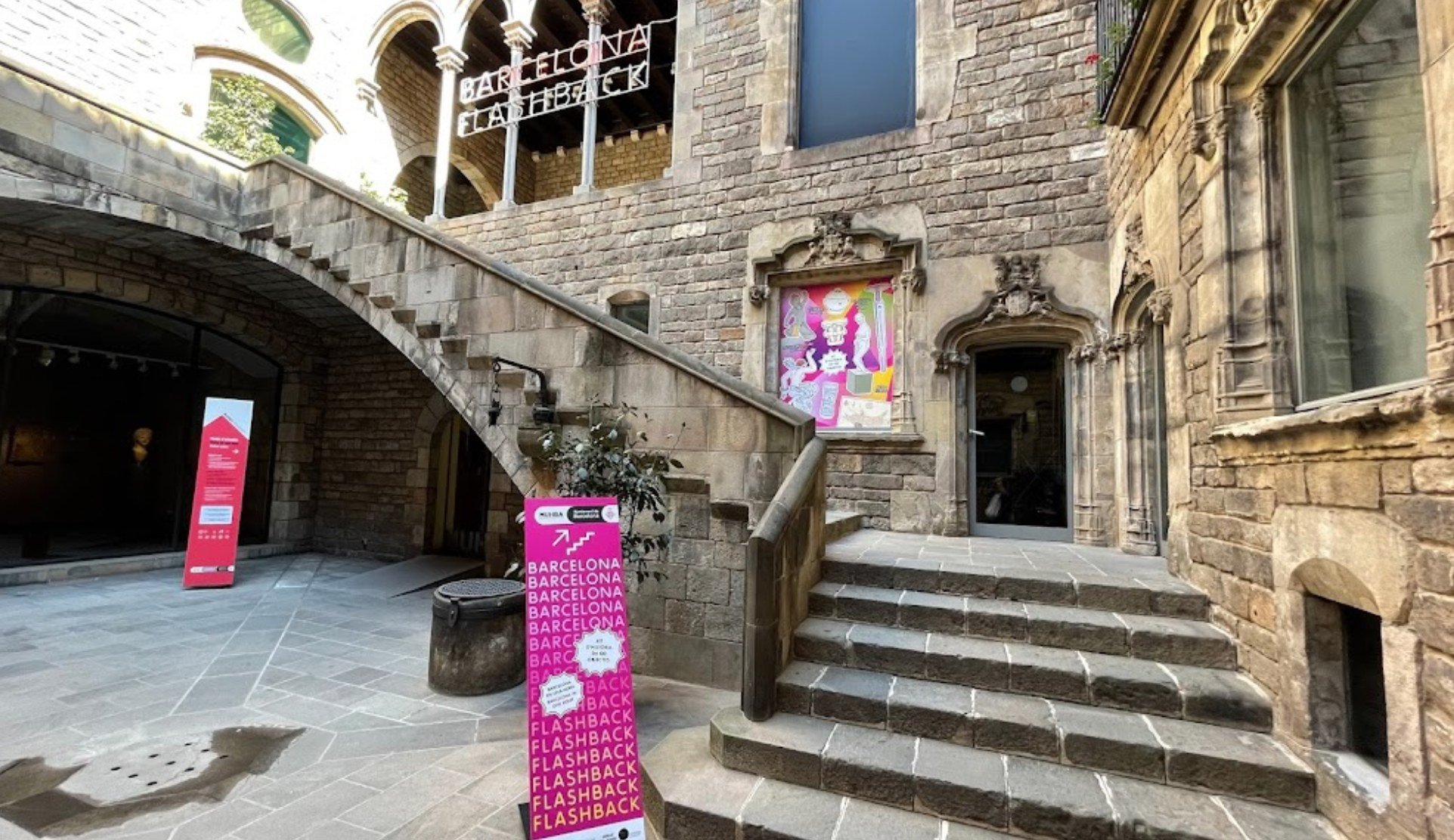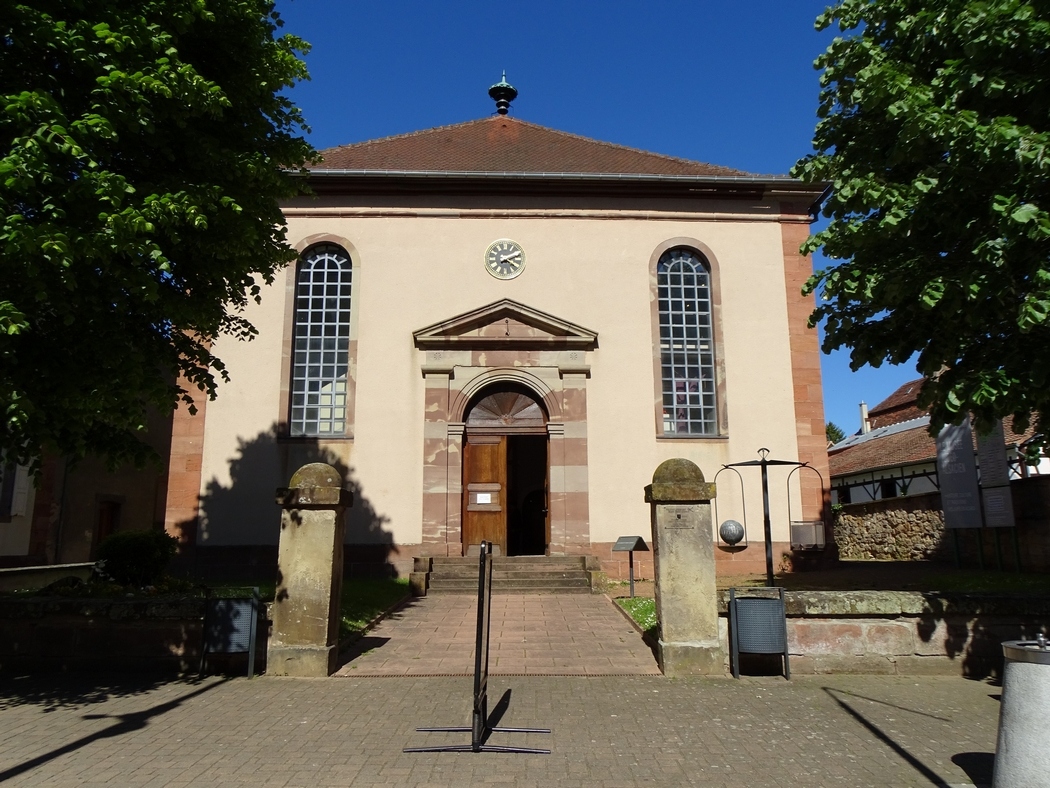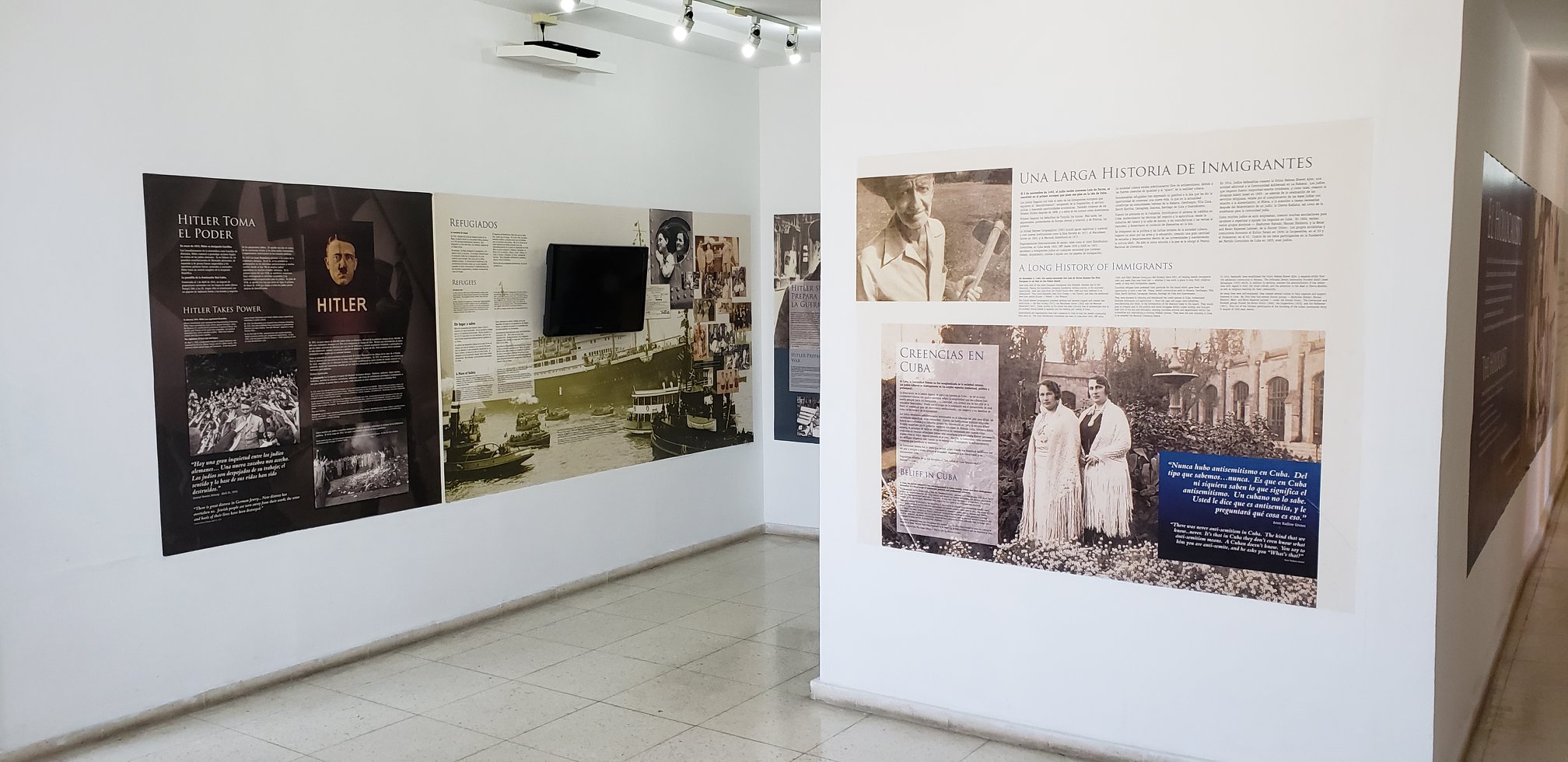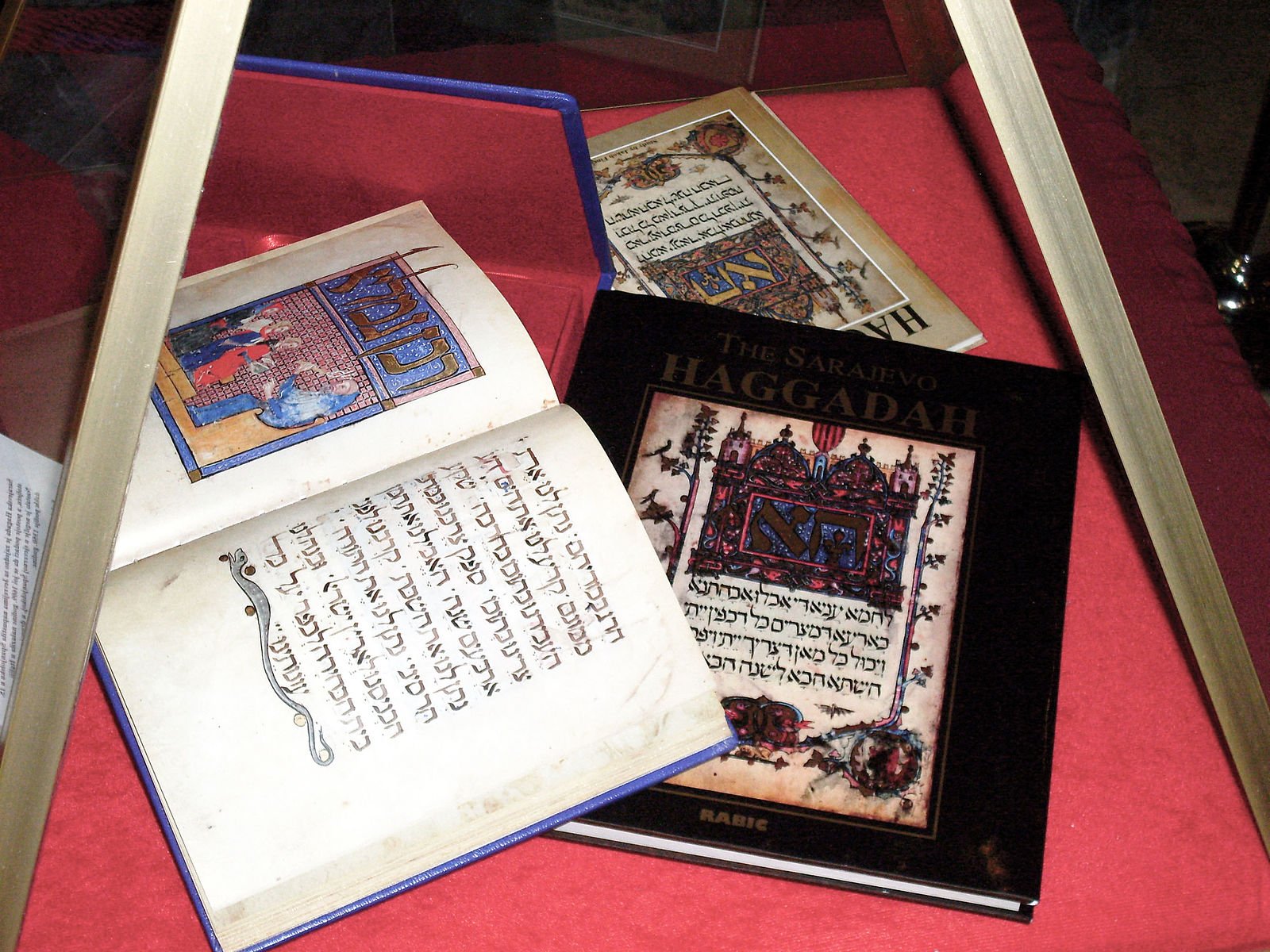Sélestat is an ancient community, which disappeared in the 16th century. It was not reconstituted at the 19th century. The oratory, dating from 1836 and installed at the Poêle des Laboureurs, was replaced by a synagogue, built in 1890. The latter, ransacked by the Nazis, was restored after the war without the original dome. The rabbinate of Sélestat dates from 1866 and replaces that of Muttersholtz.
In the 14th century the community was relatively large, judging by the size of the Jewish quarter. The synagogue was located in an alleyway, which is still visible today, next to the “pharmacie du Soleil” in the “rue des Clefs” (then “Judengasse”) and which connected with the “rue Ste-Barbe” (then “Schmiedgasse”). The name of Rabbi Ahron, to whom people came from Strasbourg to study the sacred texts, and especially that of his son, the famous Rav Schemouel Schlettstadt, who directed the yeshivah (talmudic school) of Strasbourg and is known as a compiler and decision-maker, have been preserved from this century.
The synagogue having been destroyed in 1470 to make way for the former St. Barbe arsenal, the community acquired, through the intermediary of the Magistrate, the former Poële des Laboureurs to establish its new place of worship. This building can still be seen at no. 3 Rue Ste-Barbe (rear part of the Boespflug building). The expression “auf der Judschul” (which previously referred only to the Place Ste-Barbe) was commonly used to designate the future Rue des Juifs, which became Rue Ste-Barbe in 1910.
After several waves of persecutions and expulsions, notably in 1349, during the Black Death, when the Jews of Western Europe were accused of having poisoned the wells, they were definitively expelled from Sélestat around 1650. However, Jewish merchants and showmen were authorized to come and practice their trade at the annual fairs as well as the weekly markets. This situation lasted until the Revolution. In 1622, on the other hand, the Jews of Bergheim, Ribeauvillé, Scherwiller and Dambach founded the present Israelite cemetery in Sélestat. It had to be enlarged several times afterwards. This is where Reisel Sée, whose filial love was immortalized by the moralists of the Revolution, was later buried. In 1890, the architect of the city of Selestat, Alexandre Stamm (1835-1906), designed a new building.
It has a central plan, like many Rhine synagogues, and is in the Romanesque-Byzantine style. It is a beautifully colored building with alternating pink sandstone, light sandstone and brick. The dome on a drum “with oculus” which decorated it was destroyed by the Nazis in 1940 and was not rebuilt. During this restoration, the old ritual bath (Mikveh) from 1836, part of an earlier building, was discovered in the basement.
The Hebrew inscription above the main door means: “This is the door of the Lord. The righteous shall pass through it”.
Image credit:
© Ralph Hammann – Wikimedia Commons, CC BY-SA 4.0
I, Olevy, CC BY-SA 3.0
